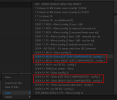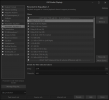From
@Floyd Toole 's book:
“A serious examination of listener reactions to complex sound fields in stereo reproduction was undertaken by [Wolfgang] Klippel [yes,
THAT Wolfgang Klippel]...
“Of special interest was his finding that what he called a “feeling of space” figured prominently... responses were solicited for two broad categories, “naturalness” and “pleasantness”, one relating to realism and accuracy, and the other to general satisfaction or preference, without regard to realism."
Klippel found that “naturalness” (realism and accuracy) was 30% related to sound quality (coloration, or the lack thereof); 20% related to tonal balance; and 50% related to the “feeling of space”.
“Pleasantness” (general satisfaction or preference) was 30% related to sound quality and 70% related to the “feeling of space”.
I would not have expected the “feeling of space” to make a 50% contribution to "naturalness” (realism and accuracy), and a 70%(!) contribution to "pleasantness" (general satisfaction or preference). But as I type this 66.7% (46 out of 68) have voted
"[Imaging] is very important for me so I don't want to compromise on it", which at a glance seems to be consistent with Wolfgang Klippels findings (though this poll and Klippel's research are actually asking different questions).
Toole continues:
“Therefore, whether one is a picky purist or a relaxed recreational listener, the impression of space is a significant factor.” I agree. Hence my argument that spatial quality matters a lot, evidently moreso for those who prioritize “pleasantness” than for those who prioritize “realism”. Apparently spatial quality matters a lot to Floyd Toole himself because he currently uses an upmixer to derive surround channel signals from stereo recordings.
Note that Klippel's term "a feeling of space" is very open-ended, and does not presume to define
what that "feeling of space" is. "A feeling of space" can mean pinpoint imaging or an extra-wide or extra-deep soundstage or a sense of immersion/envelopment or whatever.




 , and simultaneously convert into a proclamation that your fullrangers are the best.
, and simultaneously convert into a proclamation that your fullrangers are the best.

